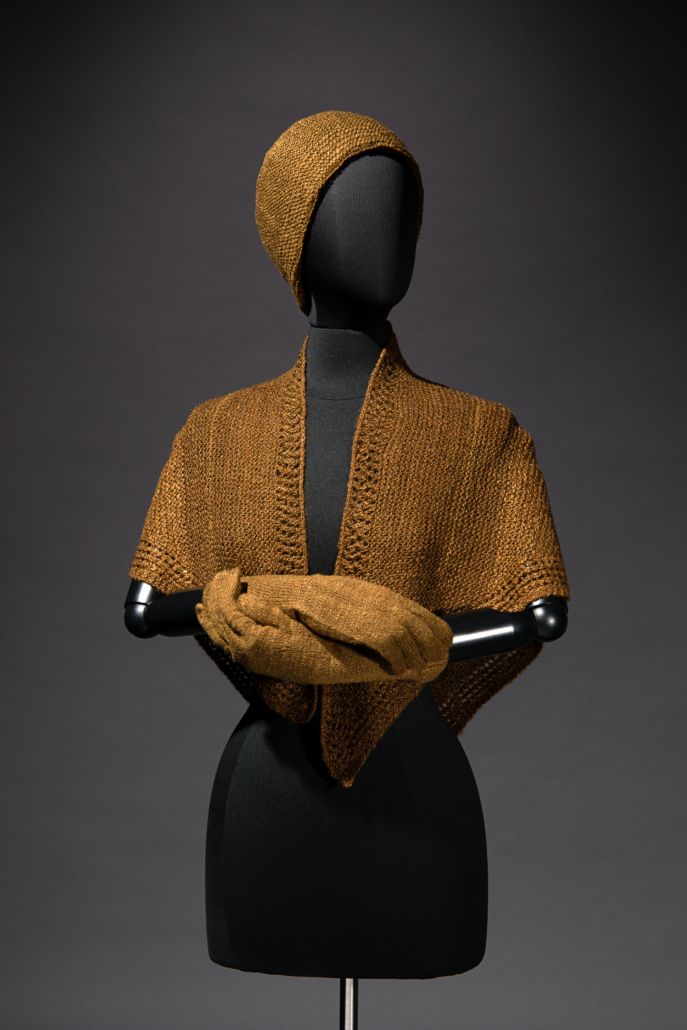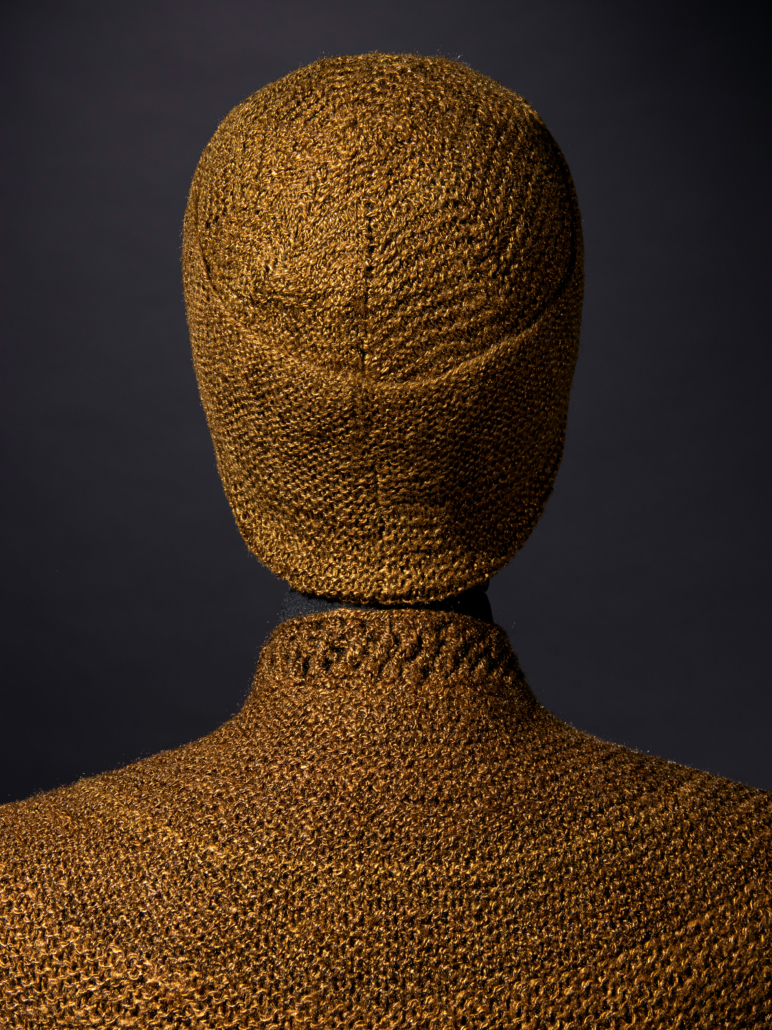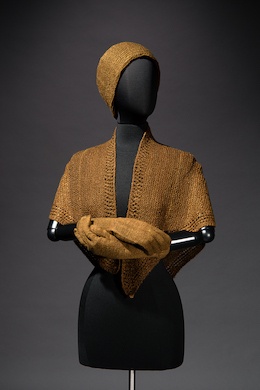
CHICAGO – On December 1, Hindman Auctions will offer sea silk, a highly coveted material, in a one-of-a-kind selection. The sale will offer a hat, shawl and pair of gloves made from knitted sea silk, a substance that is also known as byssus. The items are family heirlooms, which the owners date to around 1920, with a story that traces the items to southern Italy, one of the most important historic sources of sea silk. Absentee and Internet live bidding will be available through LiveAuctioneers.
The matched collection of vintage accessories will be offered as three separate, sequential lots (3-5), with the hat and gloves each estimated at $4,000-$6,000 and the shawl estimated at $6,000-$8,000.

Sea silk, also known as byssus, is a natural material with a distinctive glow reminiscent of gold threads. The history of sea silk is complex, and the material has emerged as a critical part of the climate change dialog as it is made of a type of mollusk that has been named an endangered species. Used since antiquity, the earliest example has been dated to the fourth century BCE, but it was likely used even earlier. Sea silk is so rare that, according to sea-silk scholars, only a small number of examples exist in museums and private collections, presenting buyers with a singular opportunity to acquire this highly sought after and elusive material.
History of Sea Silk (Byssus)
While silk for textiles is typically made by protein filaments produced by the mulberry silkworm, sea silk is made from protein filaments (also known as byssus) produced by the noble pen shell, or Pinna Nobilis, a mollusk found only in the Mediterranean Sea. These large mollusks can produce protein filaments that were historically harvested, spun and made into textiles or used for embroidery with a mesmerizing metallic sheen.
Intense attention on byssus has developed during the past several decades and the term to indicate the filament from the Pinna Nobilis. It stems from the fact that ancient references to the name, including in the Bible and Rosetta Stone, have been found to refer to a material of high status and diaphanous quality, but which was likely made of cotton or linen, and not the sea silk that comes from the sea. The term byssus started to be used for sea silk only during the 16th century. The history of the use of sea silk is still being explored. A project was launched in the 1990s to trace all known samples of sea silk in museums and private collections, and less than one hundred objects have been found to date. The sea silk hat, shawl and gloves that will be offered this December were not included in this survey, as they are new to the market.
Impact of Climate Change / Endangered Species
The increasing attention that sea silk has seen is in part due to the dramatic reduction in the number of Pinna Nobilis mollusks, attributed to environmental changes in their habitat brought on by human activity. Although attempts to protect the species started in the 1990s, a 2016 parasite outbreak caused the death of 99% of Spain’s Pinna Nobilis population. Due to this ongoing ‘mass mortality event,’ the International Union for Conservation of Nature Red List of Threatened Species has included the Mediterranean Pinna Nobilis as a Critically Endangered species.

The sea silk hat, shawl and gloves will be offered in the December 1 Luxe Holiday: Couture & Luxury Accessories auction. The sale will feature more than 100 years of fashion and luxury accessories. From vintage Louis Vuitton trunks to Parisian haute couture, to the largest collection of Chanel clothing and accessories ever presented by Hindman, this auction has exceptional items for nearly everyone on your holiday gift list.
[av_button label=’Click to view the auction catalog and sign up to bid’ icon_select=’no’ icon=’ue800′ font=’entypo-fontello’ link=’manually,https://www.liveauctioneers.com/catalog/224906_luxe-holiday-couture-and-luxury-accessories/’ link_target=’_blank’ size=’small’ position=’center’ label_display=” title_attr=” color_options=” color=’theme-color’ custom_bg=’#444444′ custom_font=’#ffffff’ btn_color_bg=’theme-color’ btn_custom_bg=’#444444′ btn_color_bg_hover=’theme-color-highlight’ btn_custom_bg_hover=’#444444′ btn_color_font=’theme-color’ btn_custom_font=’#ffffff’ id=” custom_class=” av_uid=’av-5e56lui’ admin_preview_bg=”]
View top auction results on LiveAuctioneers here: https://www.liveauctioneers.com/pages/recent-auction-sales/


